- Home
- Adam Thorpe
The Rules of Perspective
The Rules of Perspective Read online
Table of Contents
Cover Page
About the Author
Also by Adam Thorpe
Title Page
Copyright Page
Dedication
Acknowledgements
Chapter 1
Chapter 2
Chapter 3
Chapter 4
Chapter 5
Chapter 6
Chapter 7
Chapter 8
Chapter 9
Chapter 10
Chapter 11
Chapter 12
Chapter 13
Chapter 14
Chapter 15
Chapter 16
Chapter 17
Chapter 18
Chapter 19
Chapter 20
Chapter 21
Chapter 22
Chapter 23
Chapter 24
Chapter 25
Chapter 26
Chapter 27
Chapter 28
Chapter 29
Chapter 30
Chapter 31
Chapter 32
Chapter 33
Chapter 34
Chapter 35
Chapter 36
Chapter 37
Chapter 38
Chapter 39
Chapter 40
Chapter 41
Chapter 42
Chapter 43
Chapter 44
Chapter 45
Chapter 46
Chapter 47
Chapter 48
Chapter 49
Chapter 50
Chapter 51
Chapter 52
Chapter 53
Chapter 54
Chapter 55
Chapter 56
Chapter 57
About the Author
Adam Thorpe was born in Paris in 1956. His first novel, Ulverton, was published in 1992, and he has written four other novels – most recently No Telling – a collection of stories and four books of poetry. He lives in France with his wife and three children.
ALSO BY ADAM THORPE
Fiction
Ulverton
Still
Pieces of Light
Shifts
Nineteen Twenty-One
No Telling
Poetry
Mornings in the Baltic
Meeting in Montaigne
From the Neanderthal
Nine Lessons from the Dark
THE RULES OF PERSPECTIVE
Adam Thorpe
This ebook is sold subject to the condition that it shall not, by way of trade or otherwise, be lent, resold, hired out or otherwise circulated without the publisher’s prior consent in any form (including any digital form) other than this in which it is published and without a similar condition including this condition being imposed on the subsequent purchaser.
Epub ISBN: 9781446433324
Version 1.0
www.randomhouse.co.uk
Published by Vintage 2006
2 4 6 8 10 9 7 5 3 1
Copyright © Adam Thorpe 2005
Adam Thorpe has asserted his right under the Copyright, Designs
and Patents Act 1988 to be identified as the author of this work
First published in Great Britain in 2005 by
Jonathan Cape
Vintage
Random House, 20 Vauxhall Bridge Road,
London SW1V 2SA
Random House Australia (Pty) Limited
20 Alfred Street, Milsons Point, Sydney,
New South Wales 2061, Australia
Random House New Zealand Limited
18 Poland Road, Glenfield, Auckland 10, New Zealand
Random House (Pty) Limited
Isle of Houghton, Corner of Boundary Road & Carse O’Gowrie,
Houghton, 2198, South Africa
The Random House Group Limited Reg. No. 954009
www.randomhouse.co.uk/vintage
A CIP catalogue record for this book is available from the British Library
ISBN 9780099458890 (from Jan 2007)
ISBN 0099458896
In memory of my mother
Sheila Thorpe
and my father-in-law
George Wistreich
who both knew the cost of war
. . . no one who confines himself to the limits of duty ever goes so far as to venture, on his sole responsibility, to act in the only way that makes it possible to score a direct hit on evil and defeat it. The man of duty will in the end have to do his duty by the devil too.
Dietrich Bonhoeffer, After Ten Years, Christmas 1942
No harm must be done, not even the very slightest, which is not dictated by military consideration; every kind of harm may be done, even the very utmost, which the conduct of war requires or which comes in the natural course of it.
The German War Book (‘The Usages of War on Land’ issued by the Great General Staff of the German Army), trans. J.H. Morgan, London, 1915 – from a copy in the possession of the author, inscribed Sept. 17th, 1943
World War II is estimated, rather uncertainly, to have cost between 35,000,000 and 60,000,000 lives. The U.S.S.R. has been reckoned to have lost 11,000,000 combatants and 7,000,000 civilians; Poland, 5,800,000 lives altogether, including, however, some 3,200,000 of the 5,700,000 Jews put to death by the Nazis in the course of the war; Germany, 3,500,000 combatants dead and 780,000 civilians; China, 1,310,224 combatants . . . with civilian losses dubiously estimated at 22,000,000; Japan, 1,300,000 combatants and 672,000 civilians; Yugoslavia, 305,000 and 1,200,000; the United Kingdom, 264,443 and 92,673; the United States, 292,131 and 6,000.
Encyclopaedia Britannica (fifteenth edition, 1974)
Acknowledgements
I AM MOST grateful to Lieselotte Neu, my brother’s mother-in-law, for her courage in sharing long-buried, painful memories of the Allied arrival in her town in 1945; and to Jimmy and Lieselotte Thorpe for the simultaneous translation – as well as for being my guides in Germany over the years.
Willi Barth of the University of Mainz has shown exceptional generosity and care in checking over the manuscript and making numerous suggestions as well as answering my many queries; I am deeply in his debt. I thank Susan Bell for giving up her time to do likewise from an American perspective. Personal accounts by GI veterans on infantry division websites have provided invaluable information, while among the countless published sources I would like to single out: Heinz Hohne’s The Order of the Death’s Head; Jonathan Petropoulos’s The Faustian Bargain: the Art World in Nazi Germany; Frederick Spotts’s Hitler and the Power of Aesthetics; Michael Kater’s The Nazi Party: a Social Profile of Members and Leaders, 1919–1945; and Robert S. Wistrich’s Hitler and the Holocaust.
For digging up obscure books or pointing me in various right directions, I owe much to Charles Lock, Niek Miedema, Angus Wright, Virginia Pepper, Elizabeth Gadsby, Yves Ruault, Ray Ward, and Jan Salas. For precious advice concerning art and its practice, I thank my tutor, Véronique Fabre of the Ecole des Beaux Arts in Nîmes. Thank you to the distinguished historian Philip Mansel for sharing, on several delightful occasions, a passionate interest in German history. My late father-in-law George Wistreich’s aperçus, memories, and unpublished memoirs of Polish Jewry have been everywhere absorbed by the book.
I am, as ever, grateful to my editor, Robin Robertson, for his pertinent and patient advice at revision stage; to my agent, Bill Hamilton, for his enthusiasm and encouragement; and to my wife, Jo Wistreich, for her love and unwavering support.
Heartfelt thanks go also to my father, Barney Thorpe, for answering endless questions concerning the war from a serviceman’s perspective; and to my late mother, Sheila Thorpe, for telling me what it was like to be bombed – and for eve
rything else.
Do I know myself? Am I who I am? What is this shadow that passes for me? I am wood, I am dust, I am darkness. I am a single point in the universe but the universe does not know me. I am the creak of a floorboard and must extinguish myself. Yet I must live, or the universe will die.
1
Just before eleven o’clock, during the daylight bombardment that preceded the final armoured assault on Lohenfelde by units of the 346th Infantry Regiment on 3 April 1945, the city’s art museum received a direct hit from a phosphorus shell and caught fire. The solid walls of the Kaiser Wilhelm Museum now encased flame. Gallery after gallery was filled with smoke that flashed and spat into flame. Flames crawled up the walls and writhed across the ceilings. Great balls of twisting flame burst through the double doors that Herr Wolmer the limping janitor would close carefully behind him each evening and whose round brass handles the head cleaner, Frau Blumen, would polish with enjoyment to a shine every Monday morning. Now, like a small colour television thirty years before its time, each brass knob mirrored the glare of flame in perfect focus. The rooms, happily emptied of their last precious art works over a year before, waited in turn for the flames to enter them. The dull thudding of the bombardment outside was obscured by the roaring and crashing within the walls of the museum itself, though in the gallery wings not yet touched this internal business seemed as far away and faint as the sea. The odd large sculpture, too heavy to remove – mostly modern works by (or in the style of) Arno Breker, Wackerle, Klimsch; grim, heroic figures with wrestlers’ chests, their abdominal muscles chiselled squarely in crude imitation of Hellenic models, leaning their weight on the left leg, relaxing the right, holding vast Teutonic swords or Olympian torches, dumb and brutal rather than Hellenically lithe (almost pornographic in the case of the one female nude, Dawn, her nipples like bullets, her back arched . . . a piece the youngish sculptor had hoped might bring him to the attention of the Führer) – these large works waited like the remnants of a greedy god’s praetorian guard for the flames to arrive. When the flames did step over the threshold, they seemed to occupy each room swiftly, almost hastily, the stone or bronze figures vanishing and then reappearing in gouts of gold streaked with black (smoke, or the shadows the fire made upon itself as it twisted and spun), their faces in the cube-shaped heads taking on a dazed, cretinous look rather than one of heroic defiance. Perhaps if they had been genuine works of the Hellenic school, or fine Roman copies of the Greek, their expressions would have yielded an infinite sadness as the holocaust did its work around them; but they were not. They were, in fact, vulgar imitations that muddled the plastic ideal of abstraction with surface realism; the nude Dawn showed swollen veins in the crook of her elbow and on her ankles, but this laboured detailing wriggled about on a crudely realised geometry of perfection. The result was something cheaply pretending to be flesh, but flesh unanimated by the breath of humanity and vulnerability – as, say, the Aphrodite of Cyrene breathes, for all its idealisation of a certain form of beauty. Yet how many visitors had greatly admired the Kaiser Wilhelm Dawn, set at the top of the sweeping staircase as if on the landing of a brothel, their hearts swelling with pride at the manifold achievements of the Reich? Now, as the blaze mounted the staircase like a lithe athlete, three steps at a time, Dawn looked like a common bawd waiting for a client. The flames licked her cold body, hugged her in their spiralling vortex, enfolded her so completely that it was as if she had never been. Then the ceiling above collapsed, weakened by the initial impact of the shell. A beam struck her head and, broken at the neck, the head rolled down the stone stairs until the staircase gave way in a jet of sparks, the supporting girders buckling in the heat; part of the iron balustrade, however, remaining suspended in its usual position. A fine porcelain milkmaid from the Allach factory in Dachau, set in an oyster-shaped depression halfway up the stairs, remained untouched – the kind of freak marvel that often happens in fires. Similarly, the janitor’s folded newspaper on his table was still there when the American soldiers arrived, picking their way over the smoking rubble while an old woman in black with a cane watched from the road, hand to her mouth, crying softly. The table stood in a sea of destruction, quite intact, with the newspaper folded on top and unmarked under its coat of ash and soot; while plump, chain-smoking Herr Wolmer, janitor for thirty-one years, friendly once you got to know him, the position of every painting in the museum fixed in his head, who had a secret passion for the reclining Dawn and had once pledged himself stickily to her in the silence of the night hours, lay like a charred log beside the table, indistinguishable from the blackened sculptures scattered in the rubble beyond.
Listen: voices. Voices below. When you have no voice, you are a book without words or pictures. I have no voice. Those voices belong to others, and are come to tear me to shreds.
2
Most of the paintings, the sculptures, the elaborate church carvings in worm-eaten wood and the precious old books lavishly bound in pigskin and vellum, as well as a small but important collection of Renaissance globes that showed Iceland but not America, were deep down in a salt-mine some thirty kilometres from Lohenfelde. They had been placed there some months after the firebombing of Hamburg, which disaster had persuaded the curators (encouraged by an order from the Propagandaministerium) that the contents of the museum were in danger, despite the relative unimportance of Lohenfelde as an industrial or strategic centre. An inventory was made and, as soon as the salt-mine was sufficiently prepared, the works were transported to safety through the Thuringian woods on a foggy March day in 1944.
Few of these works were ever recovered. Of the 480 paintings in the picture galleries, for instance, 431 were lost – some of them no doubt looted before the salt-mine depot was destroyed during fierce fighting between American troops and a contingent of the Waffen-SS on 5 April 1945.
A certain number of works had been discreetly concealed in the vaults of the museum itself. These hundred or so paintings – not necessarily the most valuable – had remained hidden in the vaults throughout the last years of the war: a fact known to very few.
I must keep the shape of time. But time does not exist outside myself. My blood is time. I can hear it, beating. Blood is not a shape, it is sound. Maybe I must keep the sound of time.
3
A photograph taken in 1901, on the occasion of the unveiling of an illustrious burgher’s memorial, shows a fence behind the gathered crowd – the uneven planks covered in torn posters – and a few thin trees peeping over. This was the site of the museum, which had previously been ‘a castle, a tanner’s shed, a wine-store, a pot-ash factory, a wasteground on which gypsies’ tents had been pulled down in 1799, and a pine-walled school for orphans that was burned to the ground in 1863 . . .’ (Werner Oberst, A History of the Kaiser Wilhelm Museum: Lohenfelde, 1935).
Through all this movement the castle’s ancient vaults (‘like two giant communal bread ovens set at right angles to each other’, in Oberst’s description) survived, reached by worn steps and serving at one time as the local temporary lock-up.
Two years later, planning permission was granted for a museum (in the words of the local paper) ‘worthy of Lohenfelde’s fine culture and rich history, in which the artworks now on display in three cramped rooms behind the Rathaus might be gathered together with the renowned Schmeling fossil collection as well as the older books and manuscripts of the public library in a spacious and clean environment representative of the new century.’
Having been built in record time, the museum was opened by the Kaiser himself with great ceremony and to the stirring tones of the town’s excellent military band, and showed an exhibition of Dürer prints that received 13,191 visitors in three months. According to one report, the visitors had to walk on planks around the laying of a mosaic by Hans Thoma (his design consisting of wide-throated flowers and naked infants) in the central hall where the main stairs rose in a magnificent sweep of marble.
The museum’s most successful exhibition was Entartete
Kunst, which came to Lohenfelde as part of its German tour in March 1938. ‘Degenerate Art’ received an astonishing total of 149,568 visitors, five times that of any previous exhibition. They filed through the cramped spaces created by the false walls of trellis-work and burlap, talking loudly and laughing a great deal, as if at a cabaret, and frequently knocking the modernist works askew with their shoulders, elbows and bottoms. Unknown to them, the deep vaults beneath their feet had already begun to receive a certain number of the museum’s permanent paintings.
I am very lucky. I can watch the light move. I hear things no one else hears.
4
The vaults burned.
The Americans found charred canvases, blackened frames with traces of gilt, and the bodies (though the Americans did not know this) of four of the staff. The heat overhead had been too great. Perhaps the four had been cooked to death, as in a bread oven; perhaps they had died quickly when part of the roof caved in: perhaps (the most likely) they had been gassed by carbon dioxide as a result of the flames above – an effect noted in Hamburg. The soldiers couldn’t tell, and weren’t interested anyway.
They were looking for liquor, not paintings. There were five of them in there, out of the eight on patrol. They were house-clearing, flushing snipers, checking out booby-traps. There weren’t any snipers or booby-traps, not so far. It was crazy, anyway, this patrolling order – the town was crawling with their own men and with German civilians wandering around like refugees among the refugees. Otherwise they could’ve fired at anything that moved, like in the other places.
All of the men climbed out again, but one.
The one who hung back in there was supposed to be in charge of the patrol, but Corporal Neal Parry had taken art classes in his home state of West Virginia to help him get along in advertising and then he was surprised to find how well he was doing; he had even got the Kensitas girl in front of a waterfall. He fingered the remains of the burnt paintings, stooping in the gloom. He could see patches of oil paint on the canvases, burnt sienna and umber, the surface bubbled and split like the grease on the bottom of a pan. He found a label with the writing mostly scorched away, bar a couple of words.

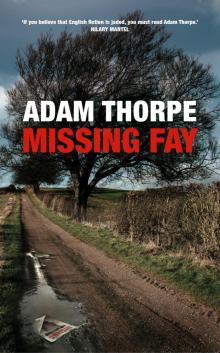 Missing Fay
Missing Fay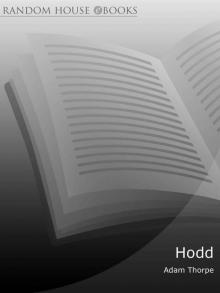 Hodd
Hodd Pieces of Light
Pieces of Light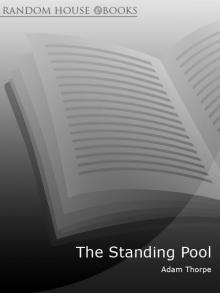 The Standing Pool
The Standing Pool Ulverton
Ulverton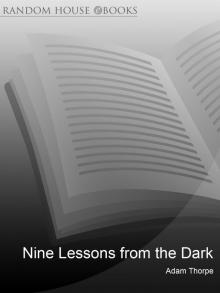 Nine Lessons From the Dark
Nine Lessons From the Dark Flight
Flight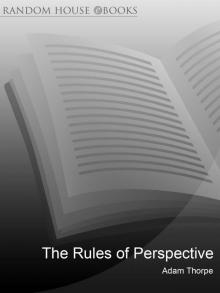 The Rules of Perspective
The Rules of Perspective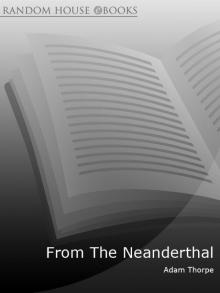 From the Neanderthal
From the Neanderthal Is This the Way You Said?
Is This the Way You Said?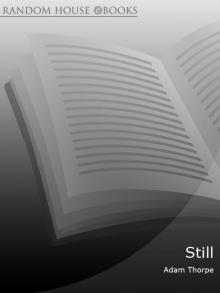 Still
Still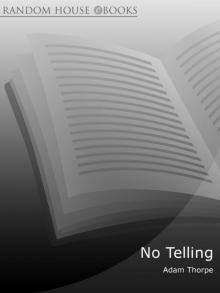 No Telling
No Telling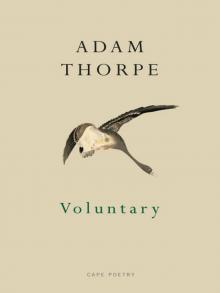 Voluntary
Voluntary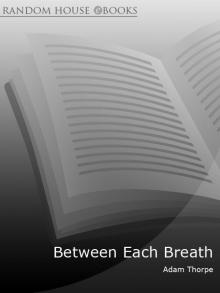 Between Each Breath
Between Each Breath